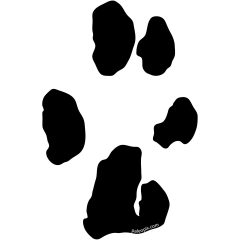Friday Headlines, February 22, 2013
THE LATEST IN THE GEOSCIENCES
First and foremost:
NSF proposal due today has been submitted. I may now carry on with my regularly-scheduled career.
CT SCANS HELP ANSWER QUESTION OF HOW FISH LUNGS EVOLVED
Fishes have an organ called a ‘swim bladder’ (called gas bladder in this article) which helps them adjust their buoyancy in the water. It has been suggested more than once that the lungs that you and I use to breathe evolved from, or shared a common origin with, this swim bladder. I mean, that’s what I was taught. Others have suggested that the swim bladder and the lung have completely different origins.
The lungs in our bodies are served by pulmonary arteries. These are blood vessels coming from the right side of the heart to carry blood to the lungs. Pulmonary veins bring blood from the lungs into the left side of the heart to be pumped throughout the body.
CT scans of gar, and several other fishes, show that the swim bladder also has pulmonary arteries. This confirms that the swim bladder and the lungs have a common origin.
Pretty slick.
AS CLIMATE WARMED, EARLY HORSES SHRANK
Modern climate change is not the only time in Earth’s history where we have experienced rapid global warming. A previous episode happened about 55 million years ago, during the Paleocene-Eocene Thermal Maximum (PETM). I myself have done research on the PETM and have a couple of posts on the topic here and here.
The PETM lasted only about 200,000 years. Things warmed up 5-9 degrees over the course of around 10,000 years, then stayed warm for the duration before cooling off again, potentially as rapidly as the warming itself occurred.
Abundant mammals existed during the PETM. One of the more interesting observations about them is that during the warm period, mammalian species experienced dwarfing. One important species – the first in the horse lineage – called Sifrhippus (also known as Hyracotherium and Eohippus) exhibited this pattern.

This pattern has been observed in many other mammal species as well. This suggests that dwarfing may be one way in which mammals adapt when temperatures rise.
